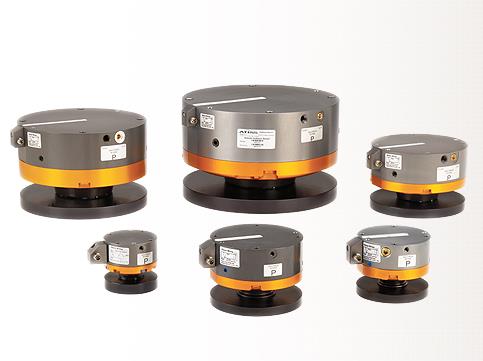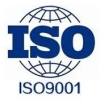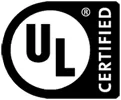The Guardian of modern car safety: Collision sensors

Nowadays, the automobile industry is developing rapidly, and safety has become a special point when we buy a car. With the continuous progress of science and technology, automobile manufacturers are also working hard to develop a variety of advanced safety systems, in order to allow drivers and cars to be safe. In this pile of technology, the collision sensor is the core of the modern car safety system, which is very important.
Basic principles of collision sensors
The collision sensor is a device that can detect the collision of vehicles, and its working principle is based on the acceleration principle in physics. If the car crashes, the sensors can immediately sense the acceleration change at that moment, and then rush this information to the vehicle's control system. The sensors typically use microelectromechanical systems (MEMS) technology, which allows the sensors to achieve highly accurate acceleration measurements in extremely small volumes.
Where are the collision sensors? It's usually on the front, back and side of the car. It can monitor the acceleration of the car in different directions, so it can know whether the collision was severe, from which direction. This information is critical to taking safety measures back there, like air bag deployment.
Type of collision sensor. There are two main types: mechanical sensors and electronic sensors.
Mechanical sensors, usually based on the principle of gravity or inertia, use a simple mechanical structure to sense collisions. For example, some early car safety systems used a small ball, and when the car crashed, the ball moved because of inertia, and the airbag was released.
Electronic sensors are now commonly used in cars, and this sensor generally integrates accelerometers and gyroscopes to detect collisions more accurately. Not only can it sense the acceleration change, but it can also analyze the dynamic state of the car, so that it can more accurately judge the collision situation.
What does the collision sensor do?
The main thing is to detect the collision in time, and then send the signal to the safety control system of the vehicle. Specifically, there are several functions:
1. Control air bags. This is one of the most important functions of the collision sensor, once the car is hit, the sensor immediately sends a signal to the airbag control unit, so that the air bag is quickly opened, protecting the safety of the driver and the car.
2. Activate the post-collision safety system. In addition to airbags, collision sensors can activate other safety systems, such as seat belt pretensioning devices and automatic window closing. Working together, these systems can minimize the damage caused by collisions.
3. Data recording. Today's cars typically have event data recorders (EDRs), collision sensors that record speed, acceleration and the status of safety systems as soon as a car is hit. This data is useful not only for accident investigations, but also for car manufacturers to know how to improve safety design.
With the development of science and technology, the technology of collision sensors is also improving. Today's collision sensors are not only more sensitive and accurate, but also have a lot more intelligent features. For example, some high-end cars are equipped with multidimensional collision sensors, which can analyze the car's driving status before the crash and predict the possible collision risk in advance.
Moreover, the degree of integration of collision sensors is getting higher and higher. Many modern cars have integrated collision sensors and other safety systems, such as collision warning systems, lane departure warning systems, etc., so that more comprehensive safety protection can be achieved. Working together, these systems allow the car to react faster and more efficiently in the event of an emergency.
However, collision sensors are not without their problems. First, the accuracy and reliability of the sensors is a big problem. If the sensor reports wrong or no report, the airbag may not deploy in time, and the accident consequences can be serious. Therefore, car manufacturers have to continuously optimize the design and algorithm of the sensor to ensure that it can be stable in a variety of complex environments.
Second, with the development of autonomous driving technology, the role of collision sensors has changed. The cars of the future may have to rely on more sophisticated sensor networks and artificial intelligence algorithms to keep them safe. This means that the collision sensor not only has the original collision detection function, but also has to cooperate with other sensors, such as radar, liDAR, and cameras, to achieve a more comprehensive safety protection system.
In the future, the collision sensor is an important part of the modern car safety system, relying on its high sensitivity and accuracy, guarding the safety of every driver and car. With the continuous progress of science and technology, the functions and applications of collision sensors will be more and more, providing a more robust guarantee for the safety of future vehicles.
Die Produkte, an denen Sie interessiert sein könnten
 |
TPCM-2.4-5 | CMC 2.41MH 5A 2LN TH | 6894 More on Order |
 |
AA53002-015 | XFRMR TOROIDAL 300VA CHAS MOUNT | 8352 More on Order |
 |
62054-P2S02 | XFRMR TOROIDAL 15VA CHAS MOUNT | 3526 More on Order |
 |
62051-P2S02 | XFRMR TOROIDAL 15VA CHAS MOUNT | 3312 More on Order |
 |
62044-P2S02 | XFRMR TOROIDAL 10VA CHAS MOUNT | 6048 More on Order |
 |
62012-P2S02 | XFRMR TOROIDAL 3.2VA CHAS MOUNT | 3204 More on Order |
 |
70074K | XFRMR TOROIDAL 35VA THRU HOLE | 6840 More on Order |
 |
70041K | XFRMR TOROIDAL 10VA THRU HOLE | 2826 More on Order |
 |
70031K | XFRMR TOROIDAL 7VA THRU HOLE | 8658 More on Order |
 |
70015K | XFRMR TOROIDAL 3.2VA THRU HOLE | 7578 More on Order |
 |
70014K | XFRMR TOROIDAL 3.2VA THRU HOLE | 5562 More on Order |
 |
70011K | XFRMR TOROIDAL 3.2VA THRU HOLE | 7560 More on Order |
 |
70003K | XFRMR TOROIDAL 1.6VA THRU HOLE | 2520 More on Order |
 |
70002K | XFRMR TOROIDAL 1.6VA THRU HOLE | 5040 More on Order |
 |
70025K | XFRMR TOROIDAL 5VA THRU HOLE | 4068 More on Order |
 |
62082-P2S02 | XFRMR TOROIDAL 50VA CHAS MOUNT | 4986 More on Order |
 |
62033-P2S02 | XFRMR TOROIDAL 7VA CHAS MOUNT | 6480 More on Order |
 |
62060-P2S02 | XFRMR TOROIDAL 25VA CHAS MOUNT | 23778 More on Order |
 |
70064K | XFRMR TOROIDAL 25VA THRU HOLE | 13758 More on Order |
 |
70034K | XFRMR TOROIDAL 7VA THRU HOLE | 8088 More on Order |
 |
70005K | XFRMR TOROIDAL 1.6VA THRU HOLE | 7218 More on Order |
 |
AC1200 | CURR SENSE XFMR 200A T/H | 2142 More on Order |
 |
AC1050 | CURR SENSE XFMR 50A T/H | 7362 More on Order |
 |
AC1025 | TRANSFORMER CURRENT 25.0 AMP | 4230 More on Order |









